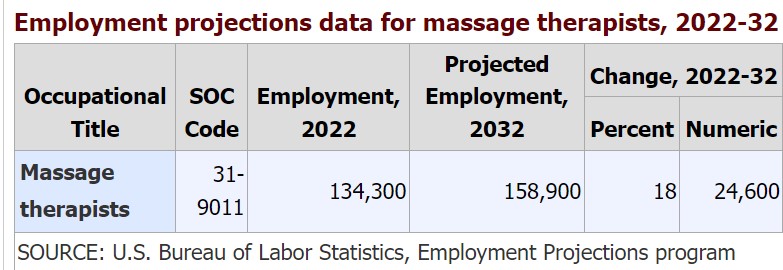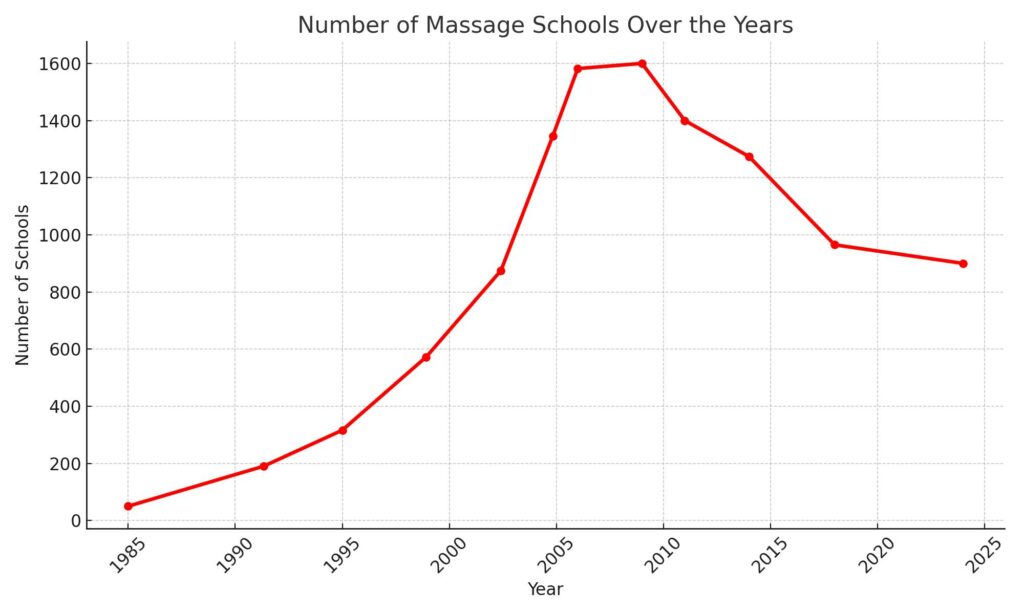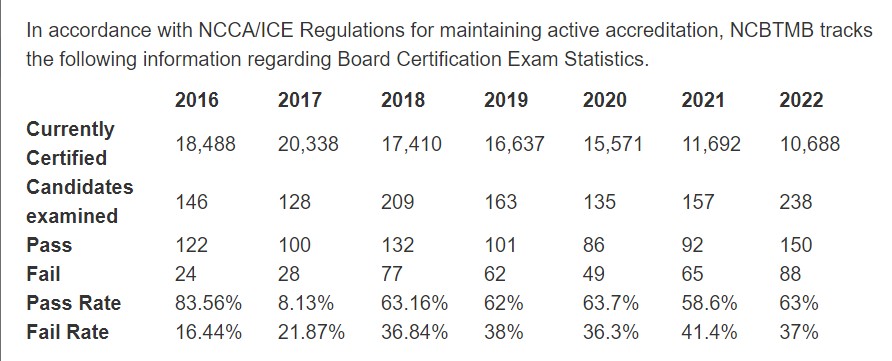This was created by Julie onofrio LMT and is my personal opinion based on my 35 years of professional massage practice and advocacy work for the massage profession. Massage therapy is increasingly popular in the US sought after for pain and stress relief with more people consulting doctors for referrals.
The profession is expected to grow by 18% from 2022 to 2032 indicating a brightfuture according to the US Bureau of Labor Statistics. More people are seeking massage for sports injuries, pain, anxiety and depression. It is being used in hospitals and by the Veterans Administration it is being used postoperatively for pain, reducing arthritis pain, fibromyalgia pain and to restore function and increase range of motion.


Despite the growing demand there’s a concerning decline in the number of practicing and entering massage therapists attributed to various challenges including the pandemic lowwages and burnout among others. This decline also started before the pandemic. The decrease in massage therapy schools from 1,600 in 2009 to about 900 recently further highlights the profession’s struggles. See the article: Phenomenal Growth of Massage Schools at www.massageschoolnotes.com.
There are two main professional massage associations: the not for-profit AMTA and the for-profit ABMP each playing significant but different roles in the industry. AMTA holding about $30 million in assets financially supports several associations such as the Massage Therapy Foundation and the National Certification Board for Massage and Bodywork. Details on how ABMP utilizes it’s assets and supports the industry particularly in licensing and legislation, remain less transparent. They are quite active in their efforts though.
The Alliance for Massage Therapy Education is making efforts to revitalize itself indicating the profession’s resilience and dedication to Improvement. They were instrumental increating the body of knowledge in collaboration with the other big seven associations. They have created the Core Competencies for massage therapy, Teachers National Education standards project and a Teacher Certification program.
In January 2007, the American Massage Therapy Association began hosting a series of four meetings to explore the possibility of the massage therapy professions leadership organizations working together to develop consensus around definitions and scope of practice issues – what is typically called the Body of Knowledge (BOK) for a profession. The Foundational elements of the Body of Knowledge which was created in 2010 with a second version in 2014 was a monumental effort by all. Many long hours went into it’s creation. It has been used to help create the Entry Level Analysis Project that was created in 2012 but lies waiting for an update. Learn more about the history of AMTA.
The Federation of State Massage Therapy Board plays a pivotal role in regulating the profession through the MBLEx licensing exam FSMTB is anautonomous nonprofit organization comprised of state regulatory boards and agencies that regulate the massage therapy profession. The FSMTB was established in 2005. They have created the Human Trafficking Task Force and report and also a Model Practice Act. Learn more about the history of the FSMTB.
The National Certification Board for massage and bodywork has created the Board Certification in Therapeutic Massage and Bodywork® (BCTMB® ) and oversees the approved provider program that promotes and upholds the highest standards of continuing education. They lost their way for a while and were nearly bankrupt until AMTA stepped in toprovide funding. In 2012 their initial requirement for their certification program was 750 but has since been reduced to 500 hours. The number of board certificants shows the story. Learn more about the history of the NCBTMB
The Commission on Massage Therapy Accreditation (COMTA) accredits both educational institutions and programs offering instruction in massage therapyand bodywork or Aesthetics and skincare. Accreditation is required for an institution to participate in Title IV funding and enable students to receive federal financial aid . The Department of Education just changed their rules and the many schools that are currently accredited will have to reapply for accreditation if they changetheir program to meet the new requirements a time consuming and expensive process or students would have to pay for the entire program on their own and/or through direct loans. All massage schools across the country with Title IV funding must align their hours to their state minimum hours by July 1st 2024 which is approximately 350 school ssome of which are accredited by COMTA.
All of these organizations are needed to be considered a profession they meet annually to foster collaboration addressing pressing issues and advancing the profession collectively. Often times it seems like one does not know what the other is doing. The lack of transparency is also evident with so much going on all the time and organizations not reporting what they are doing and why Some are really the best kept secrets in the profession. Despite having strong frameworks the profession struggles with consistency in practice standards, Licensing Laws and efforts to distinguish itself from illicit activities. We lack license portability because our Licensing Laws vary greatly from state to state.
Here are some of the things that could help us move forward :
- clear Universal definitions of massage and related terms
- consistent scope of practice laws
- consistent Licensing Laws
- license portability
- update the ELAP
- Update and implement the model Practice Act
- Update the human trafficking report
- Create stronger laws for unlicensed practice
- Create specialty certifications
- Ensure the preservation of the history of the massage profession
The call for astronger massage profession emphasizes the desire for standardized practices, license portability and recognition of massage therapy’s legitimacy and importance in healthcare.
What do we want? When do we want it? Join me in my Facebook group to focus on advocacy work :facebook.com/groups/massageadvocates and discuss the many issues and possible remedies.
Together these associations work together to help make us the profession that we are. There is an unofficial coalition of all of them that meets yearly to discuss important topics in the profession. They include:
- Alliance for Massage Therapy Education (AFMTE)
- American Massage Therapy Association (AMTA)
- Associated Bodywork & Massage Professionals (ABMP)
- Commission on Massage Therapy Accreditation (COMTA)
- Federation of State Massage Therapy Boards (FSMTB)
- Massage Therapy Foundation (MTF)
- National Certification Board for Therapeutic Massage and Bodywork (NCBTMB)
What do we want? A Unified Massage Profession! When do we want it? Now!
See more: The History of NCBTMB
History of the Federation of Massage State Boards
History of Hospital Based Massage
History of getting massage covered by health insurance in WA State.
